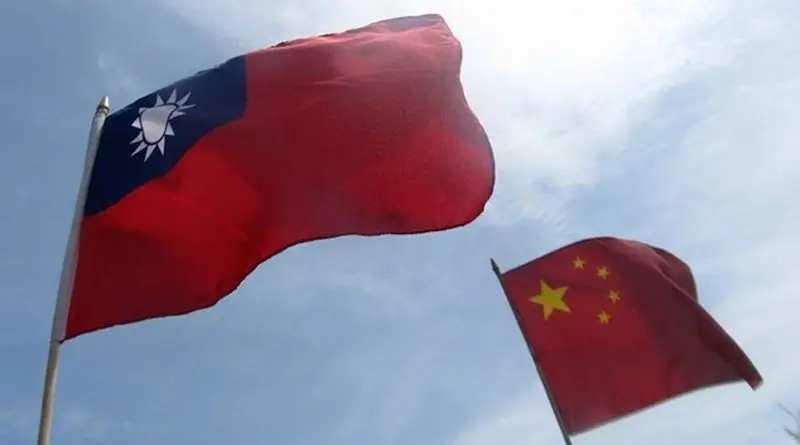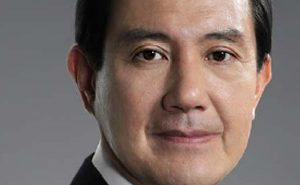Ma-Xi Summit And Implications For Cross-Strait Relations – Analysis
Politics in Taiwan is heading towards navigating through turbulent waters when the hard-line William Lai Ching-te, the current vice president under Tsai Ing-wen administration, assumes the office of President on 20 May 2024. He would be the next head of the independence-leaning Democratic Progressive Party (DPP), who is labelled by Beijing as a “separatist” and feared to bring war to the island.
Beijing tried to downplay the significance of the DPP victory as the ruling party won just 40 per cent of the presidential ballot and lost its majority in the legislature. China’s Taiwan Affairs Office, the official body in charge of cross-strait matters, said the result did not represent the views of most Taiwanese. That is factually incorrect.
Against this background and amid soaring cross-strait tensions, Taiwan’s former President Ma Ying-jeou of the Kuomintang (KMT), seen as pro-China, visited Beijing on 10 April 2024, just over a month to go before Lai takes over as Taiwan’s president, and met Chinese President Xi Jinping. This was their second meeting after they met in Singapore in November 2015, when Ma was the President of Taiwan. Ma led a 20-young people delegation to the Chinese mainland for talks. Ma and Xi Jinping met for the first time on Chinese soil. Considered to be friendly to China than the current President Tsai, the meeting is seen as an effort by China to influence Taiwan politics. The pair’s November 2015 Singapore meeting was the first cross-strait summit since the two sides split in 1949 following civil war. The highlight of that meeting was an 80-second handshake ahead of closed-door talks. Since the defeated Republic of China government fled to Taiwan in 1949 after losing a civil war to Mao Zedong’s communists, no serving Taiwanese leader ever visited China.
Why Ma’s visit is significant?
During the visit, Ma visited Fujian, Xian and other places. In 2023 too, Ma had visited China just before Taiwan went for presidential elections in January 2024 but did not meet Xi Jinping. Ma was president of Taiwan from 2008 to 2016. During his tenure he steadily deepened economic ties with the mainland and signed many agreements related to postal communication and air travel. (1)
During his tenure, Ma opened the tourism industry and facilitated group tours from China. Capped initially at 300 visitors a day, the number quickly soared to 1.6 million people coming from China to Taiwan in 2011 and ending at 7 million by year end, contributing $3 billion to Taiwanese economy, equivalent to 0.72 per cent of the island’s GDP. (2) In June 2010, Ma proposed an Economic Cooperation Framework Agreement (FCFA) with China, which was massively opposed in Taiwan. The youth spearheaded the agitation which was called later as the Sun Flower Movement. They saw the ECFA as detrimental to Taiwan’s economy and started evaluating it critically.
Further, Ma took more new initiatives that would please Beijing. In September 2020, he launched confidence-building measures (CBMs) in the military field with China and proposed a peace agreement in October 2011 through a referendum process. Though such pro-China measures pleased the Chinese leadership, the Taiwanese people rejected the initiatives with contempt.
What did Xi tell Ma?
Ma’s pro-China measures had endeared him to the Chinese leadership, even though they backfired with the Taiwanese citizens. This time, Xi did not mention about Chinese intimidating military exercises near Taiwan but remarked that “external interference cannot hold back the historical trend of national reunification.” Stressing further, Xi went on: “All Chinese on both sides of the Strait should firmly oppose any separatist moves of secessionists on the island and interference by external forces, firmly safeguard the common home of the Chinese nation, and work together to pursue a bright future for peaceful reunification. The future of the Chinese nation should be firmly held in the hands of the Chinese people.” Even earlier Xi had repeatedly has said Taiwan is part of his rejuvenation project. His present remarks were aimed at countering the US, Japan and other countries supporting Taiwan. It also indirectly criticised “independent” forces within Taiwan.
As Ma made history by meeting China’s top leader on mainland soil, Xi’s remarks that “foreign interference” cannot stop “family reunion” resonated well with the KMT’s supporters back at home. Ma responded to Xi’s observation that there is no problem that cannot be talked through, saying war “would be unbearable for the Chinese nation”. Ma’s Beijing visit marked the first time the top mainland leadership had received a serving or former president of Taiwan. As Ma claimed, his was a “journey of peace”.
Despite the prolonged ongoing tensions, the talk between Xi and Ma were in conciliatory tone. Underlining that “there are no forces that can separate us”, Xi said differences in political systems could not change the fact that the two sides were one country. Seeking “peaceful reunification”, Xi was categorical in remarking that “foreign interference”cannot stop the historic trend of a “family reunion”. This did not deter Ma, however, to say that the “recent tensions between the two sides …have triggered a sense of insecurity among the public in Taiwan”. Chinese analysts were soon to conclude that from the talks, it transpired and sent an important message from Beijing that it is determined to solve the Taiwan issue peacefully.
What this interpretation denotes in the larger context when Taiwan is going to have a pro-independence leaning President in Lai in May 2024 and Washington sending signal to have warm ties with Beijing while committing to defend Taiwan if it comes under attack at the same time? So, the issue is complicated. Moreover, Ma is not in office and therefore his pro-Beijing stance shall have no meaning in pursuing policy towards Beijing during Lai’s tenure. Like the soon-to-be outgoing Tsai ineligible to run for the Presidency again after completing her second and final term as president, Ma too ended his second and final term as president of the self-governed island in early 2016. But Ma still remains influential among the opposition and could create trouble for Lai. However, there is a contrarian view that Ma’s visit shall have limited impact given his current diminished stature in Taiwan compared to his presidential days. Ma holds no elected office and is in the single digits in opinion polls. (4)
Even for the January Presidential elections, Ma tried hard to forge a joint agreement between the KMT and the smaller Beijing-friendly Taiwan People’s Party to challenge the DPP but the deal collapsed in late November as both parties could not come to an agreement on a common leader.
Taiwan dilemma for the US
Beijing’s position on Taiwan is that it is a part of its territory awaiting reunification, by force if necessary. Like most countries, the US does not recognise Taiwan as independent but remains committed to defend the island if China ever makes any attempt to take it by force and remains committed to supplying it with weapons.
“1992 Consensus” and what does this mean?
During Ma’s meeting with Xi in Singapore, both discussed how to develop the cross-strait relations and the “1992 consensus”. The “1992 consensus” refers to a tacit understanding between the Communist Party of China and the KMT negotiators that there is only in “one China”, but the two sides may disagree on what that means. The Taiwanese side meant the “Republic of China” (Taiwan) and the Communist side meant the “People’s Republic of China”. Accordingly it was agreed to set up a cross-strait hotline as a confidence-building and tension-reducing measure.
There was no written agreement. Neither Lee Teng-hui, the president of the time nor Koo Chen-fu, who negotiated the Taiwanese side in the negotiations, acknowledged any consensus. The Chinese side stubbornly maintained that this “phantom agreement” is the basis for cross-strait exchanges. China also maintains that the interests of the people on both sides of the Taiwan Strait would be severely damaged if this consensus is not recognised.
However tensions returned after Tsai came to power and refused to accept the “1992 consensus”. Beijing responded by suspending official exchanges with Taipei. This time it transpired from the Xi-Ma meeting that both sides want a peaceful solution. So far the DPP has not gone overboard and desisted from declaring self-independent.
The cross-strait dynamics could be messy during Lai’s presidency. It is well recognised that president-elect Lai is a de facto “Taiwan independence” advocate. He firmly believes that China will never hold talks with Taiwan during his presidency. He believes that the condition for dialogue is Taiwan’s acceptance of the “1992 Consensus” in which the principle of “One China” is said to have been firmly confirmed by both sides. Without this, there can be no coming to a mutual understanding between China and Taiwan.
Issue of Taiwan identity
After the KMT lost its war to the CCP in 1949 and fled to Taiwan, the KMT choose an authoritarian model of government until this was reversed in 1986 when the leadership initiated the democratic system of governance. The younger generation started to define their position in terms of their identity and a fraction of the people sought unification with China but majority of them saw themselves primarily as Taiwanese. Since then, the issue of identity remains tied to Taiwanese politics. Both the DPP and KMT use the identity issue in their political discourse. (5)
The DPP’s position is that it rejects Beijing’s territorial claims and says that only Taiwan’s people can decide their future. In contrast, Beijing’s precondition for official communication demands Taiwan accepts both sides of the strait are part of “one China”. Beijing considers Lai who is pro-status quo and takes office on 20 May as a dangerous separatist. The truism is that over 80 per cent of people in Taiwan want to maintain the present status quo, which Beijing views the advocates as separatists, spilitist and pro-independence.
The present generation of Taiwanese have lived in a democratically governed system and tend to abhor the authoritarian model of governance. They have tasted the fruits of freedom in the era of democratisation, a clear departure from the authoritarian system that Taiwan (another example is South Korea) had till 1986. Moreover the present generation of Taiwanese are displeased with the failure of Hong Kong’s “one country, two systems” model. This has become now an irreversible force to strengthen Taiwan’s identity. With such political environment where majority of the people cherish freedom and rights that a democratic, prosperous, and sovereign Taiwan provides, the Lai administration is likely to assume more boldness in taking a position and not be bullied by China. Moreover Lai shall have the backing of the democratic world. That means China’s peaceful reunification dream is likely to remain a pipedream for considerable time.
Endnotes:
- Srikant Kondapalli, “Xi Jinping’s meeting with former Taiwanese president: Understanding cross-Strait dynamics”, 16 April 2024, https://www.firstpost.com/opinion/xi-jinpings-meeting-with-former-taiwanese-president-understanding-cross-strait-dynamics-13760229.html
- Ibid
- Amber Wang, Vanessa Cai and Xinlu Liang, “No problem that can’t talked through, President Xi Jinping tells Taiwan’s Ma Ying-jeou in historic Beijing talks”, 10 April 2024, https://www.scmp.com/news/china/politics/article/3258424/president-xi-jinping-meets-taiwans-ma-ying-jeou-historic-first-9-years-after-landmark-singapore?utm_medium=email&
- “China’s President Xi Jinping says nobody can stop ‘family reunion’ with Taiwan”, 10 April 2024, https://www.channelnewsasia.com/asia/china-xi-jinping-taiwan-ma-ying-jeou-family-reunion-4255701#mdcrecs_s
- Toshio Watanabe, “”’Status Quo in Taiwan: What this actually means”, 9 April 2024, https://japan-forward.com/status-quo-in-taiwan-what-this-actually-means/


